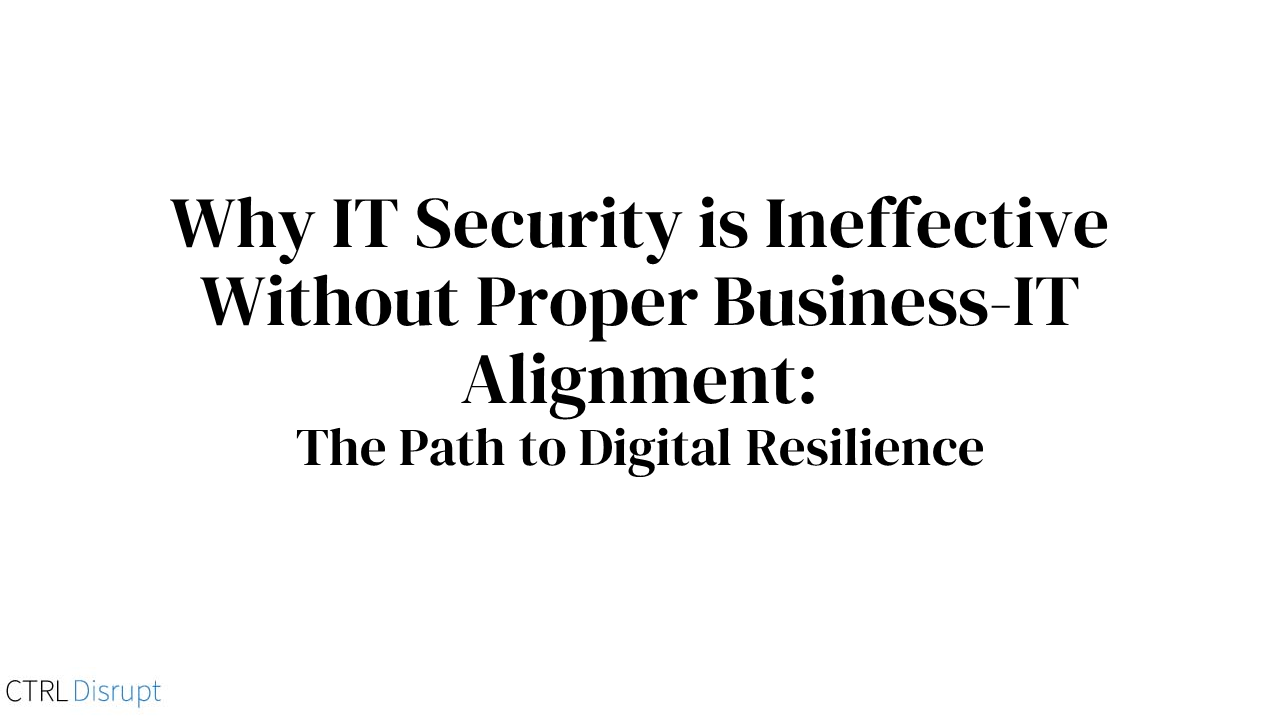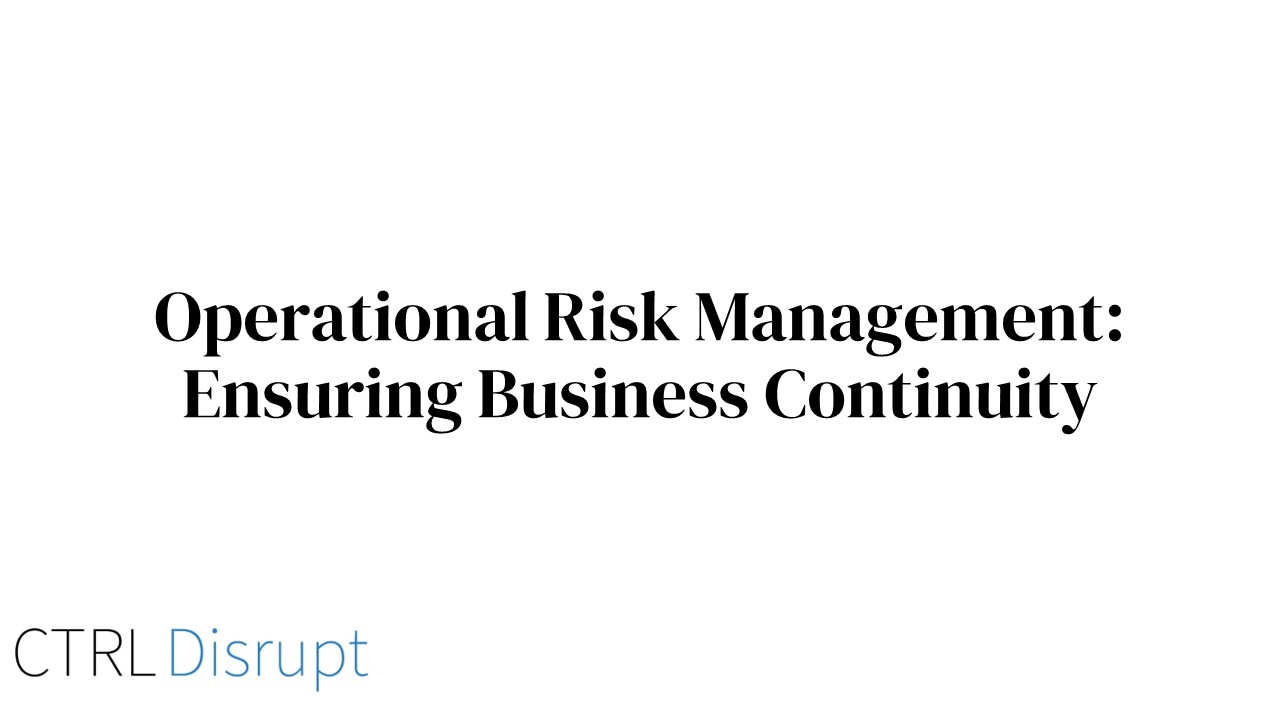The Intersection of Resilience and Risk Management
In today's complex and swiftly evolving business landscape, two terms have emerged as pillars of sustainable success: resilience and risk management. Resilience, at its core, refers to the ability of an organization to anticipate, prepare for, respond to, and recover from adverse events. It's about adaptability and the strength to bounce back, whether from sudden market crashes, global pandemics, or innovative disruptions. On the other hand, risk management is the systematic process of identifying, assessing, and mitigating potential uncertainties that could impact the achievement of objectives. This encompasses both negative risks, traditionally viewed as threats, and positive risks seen as opportunities.
Organizations everywhere are beginning to grasp that mere survival in this unpredictable world isn't enough; they need to thrive. And to do so, they must be nimble, adaptive, and proactive. At the heart of this agility lies effective risk management. Gone are the days when risk management was solely a protective measure. In our modern era, it is a dynamic tool that balances the management of potential threats with the harnessing of lucrative opportunities. Both are integral to building and maintaining organizational resilience.
How Risk Management Strengthens Organizational Resilience
At the core of every organization's journey towards resilience lies the nuanced understanding and management of risks. Every business, regardless of its size or industry, is constantly navigating a labyrinth of challenges and opportunities. Risk management, traditionally perceived as a shield against potential threats, has now evolved to also act as a compass, guiding organizations towards uncharted territories filled with opportunities.
In the realm of risks, it's imperative to remember that not all are menacing shadows lurking in the corner. Some risks are golden opportunities waiting to be seized. Imagine a company deliberating over the risk of entering a new market. Yes, there might be fierce competitors and unknown challenges. But this same market could be a goldmine of untapped potential and avenues for exponential growth. This dual nature of risks, encapsulating both threats and opportunities, mandates a balanced approach to risk management, ensuring protection on one hand and proactive pursuit on the other.
Being proactive is a cornerstone of modern risk management. It's not merely about crafting contingency plans for when things go awry. It's about anticipating the winds of change, adjusting the sails in real-time, and ensuring the ship stays its course even in turbulent waters. By visualizing potential scenarios and understanding their implications, organizations can sculpt strategies that don't just react but preempt, bolstering resilience in the process.
In this dance with risks, learning and adaptation become the rhythm. A resilient organization doesn't just experience; it learns, evolves, and grows stronger with every encounter. Through the continuous process of risk assessments and reviews, strategies are not set in stone but are fluid, ever-evolving blueprints that adapt to the shifting landscapes of challenges and opportunities.
But what truly amplifies the potency of risk management in building resilience is the culture it seeds. When an organization places risk management at the forefront, it sends ripples across its fabric. Employees, stakeholders, and leaders become more risk-aware, developing a keen sense for both threats and opportunities in their daily endeavors. This collective consciousness, a shared awareness, translates into an agility that is unmatched. It's like a well-oiled machine, where every cog, no matter how big or small, knows its role and can adapt on-the-fly, ensuring the machinery runs smoothly even when thrown a curveball.
Lastly, by discerning and ranking risks, organizations gain clarity. This clarity plays a crucial role in the distribution of resources. Be it capital, human resources, or technology, with a clear understanding of where the major threats and opportunities lie, resources can be channeled effectively, reinforcing the organization's resilience.
In essence, resilience in today's business arena is a journey, and risk management is the guiding star. It’s not just about braving the storms but knowing when to harness the wind to sail forward.
Case Study: Toyota's Resilience and Risk Management Post-2011 Japan Earthquake
In the aftermath of the devastating Tōhoku earthquake in March 2011, Japan grappled with profound economic and infrastructural challenges. The automotive industry, one of Japan's crowning jewels, faced unprecedented disruptions. Amidst this chaos, Toyota, a global automotive titan, found itself at a pivotal juncture.
The earthquake had left a significant portion of Toyota's suppliers incapacitated. This immediate supply chain disruption not only threatened Toyota's production but also posed risks like potential loss of market share to international competitors, significant financial implications, and the potential tarnishing of its well-earned global reputation.
However, every dark cloud has a silver lining. This crisis, while fraught with threats, also presented Toyota with unique opportunities. It became a moment to deepen relationships with suppliers by offering support during trying times. It was also an opportune moment for introspection, allowing Toyota to identify vulnerabilities in its supply chain, prompting a strategic review and optimization.
Guided by the principles of the Toyota Production System (TPS), Toyota approached the crisis head-on. The company's commitment to "Just-in-Time" manufacturing meant that while they kept inventories lean, they had a nuanced understanding of their supply chain's intricacies. This knowledge became crucial in swiftly identifying and addressing the crisis's challenges.
Equally significant was Toyota's ethos of "Genchi Genbutsu," which means "go and see for yourself." Rather than managing the crisis from distant boardrooms, Toyota's leadership believed in ground-level problem-solving. This approach ensured that they worked hand-in-hand with affected suppliers, leading to collaborative and effective solutions.
With a combination of strategic foresight, on-ground problem-solving, and collaboration, Toyota not only overcame the immediate challenges but also fortified its future. Post-crisis, Toyota took measures to diversify its supply chain, transforming a past vulnerability into a long-term strategic advantage.
By September 2011, Toyota's recovery was in full swing, marking a triumphant comeback. This journey from the brink of significant disruption back to industry leadership within mere months showcased Toyota's remarkable resilience. It serves as a testament to how an organization, when armed with the right principles and strategies, can weather storms and emerge even stronger.

 By
By


